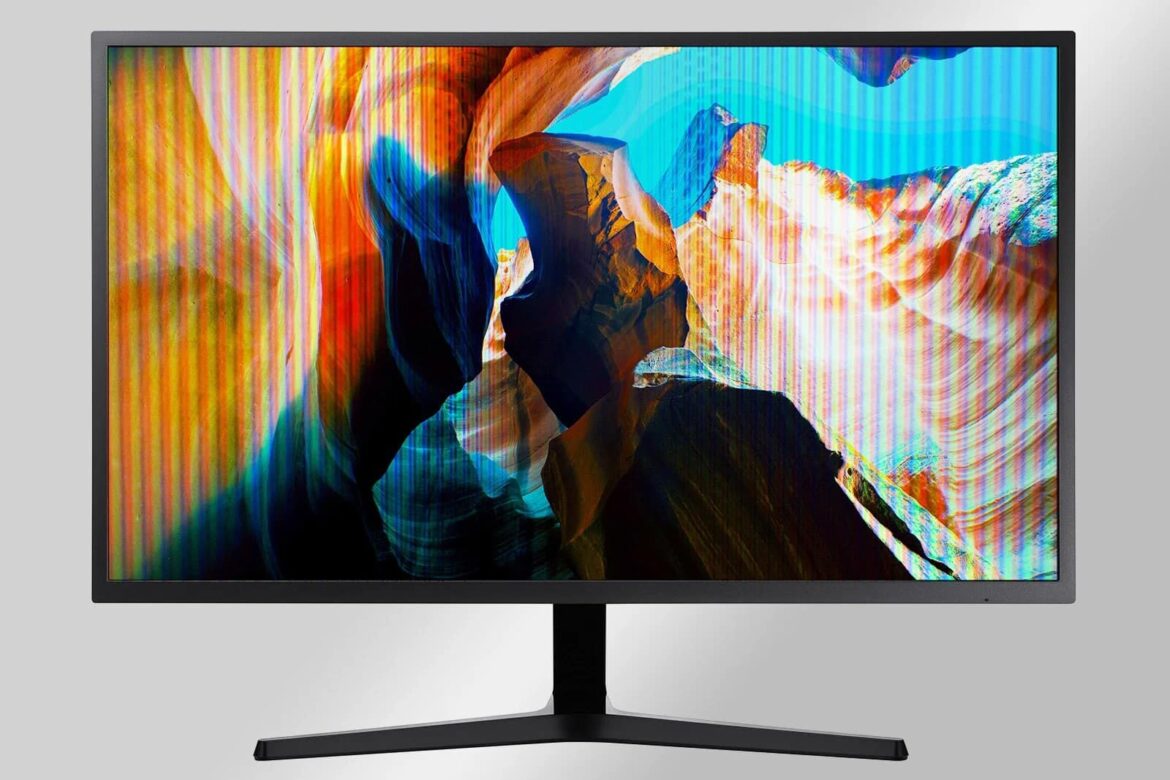684
Flickering on your PC monitor is not only annoying, but can also become a strain on your eyes over time. The problem can have various causes.
PC monitor flickers – check settings
A flickering screen is often due to incorrect or inappropriate settings. Fortunately, such problems can usually be quickly and easily remedied by adjusting the software and hardware configuration of your computer.
- A refresh rate that is too low can cause flickering. Go to the display settings of your operating system and make sure that the monitor is set to the recommended frequency (e.g. 60 Hz, 75 Hz or 144 Hz). Higher frequencies ensure a flicker-free image.
- Check that the screen resolution is set correctly. If it does not match the appropriate resolution of the monitor, this can lead to display problems.
- Outdated or faulty drivers can also cause flickering. Visit your graphics card manufacturer’s website and download the latest version. After installing the driver, a restart may be required.
- Power-saving mode or automatic brightness adjustments can also cause the screen to flicker. Disable these features in the monitor settings to get a stable image.
- A damaged or inferior cable can also cause flickering. Replace the cable and test it to rule out a possible hardware problem.
Avoid screen flickering caused by external influences
The cause of flickering is not always the technology itself – external factors can also trigger the problem.
- Electrical devices such as loudspeakers or smartphones can cause electromagnetic interference. To avoid interference, keep such devices away from the monitor.
- Flickering fluorescent or LED lighting can visually enhance monitor flicker. Changing your light source or dimming the lights can minimize the problem.
- Voltage fluctuations in the power grid can also cause monitor problems. Connect your PC and monitor to a power strip with surge protection or an uninterruptible power supply.
- Avoid direct sunlight or extremely bright environments as they can increase the perception of flicker.
Identify and resolve hardware issues
If software adjustments and environmental optimization do not resolve flicker, there may be a hardware defect.
- Connect the monitor to a different PC or laptop. If the problem persists, the monitor may be defective and require repair or replacement.
- Connect another monitor to your PC. If the flickering persists, the graphics card could be the cause. In this case, replacing the card or thoroughly cleaning the contacts often helps.
- Overheating can cause hardware problems that manifest themselves in the form of flickering. Clean the fans and vents of your PC to ensure adequate cooling.
- In some cases, loose connections between the graphics card and the motherboard or poorly fitting monitor connections can also cause the problem.
- If all measures fail, it is advisable to consult a specialist. They can determine the exact cause of the flickering and carry out a professional repair.
Worst Case with Flickering Monitor – Graphics Card Defective
In the worst case, your graphics card could be defective.
- If the above steps have not solved your problem, it is likely that the graphics card is defective.
- Experts can check the graphics card for errors and, if necessary, replace it.
- In rare cases, there may also be an incompatibility between the hardware installed in your system. Again, only an expert can help.

